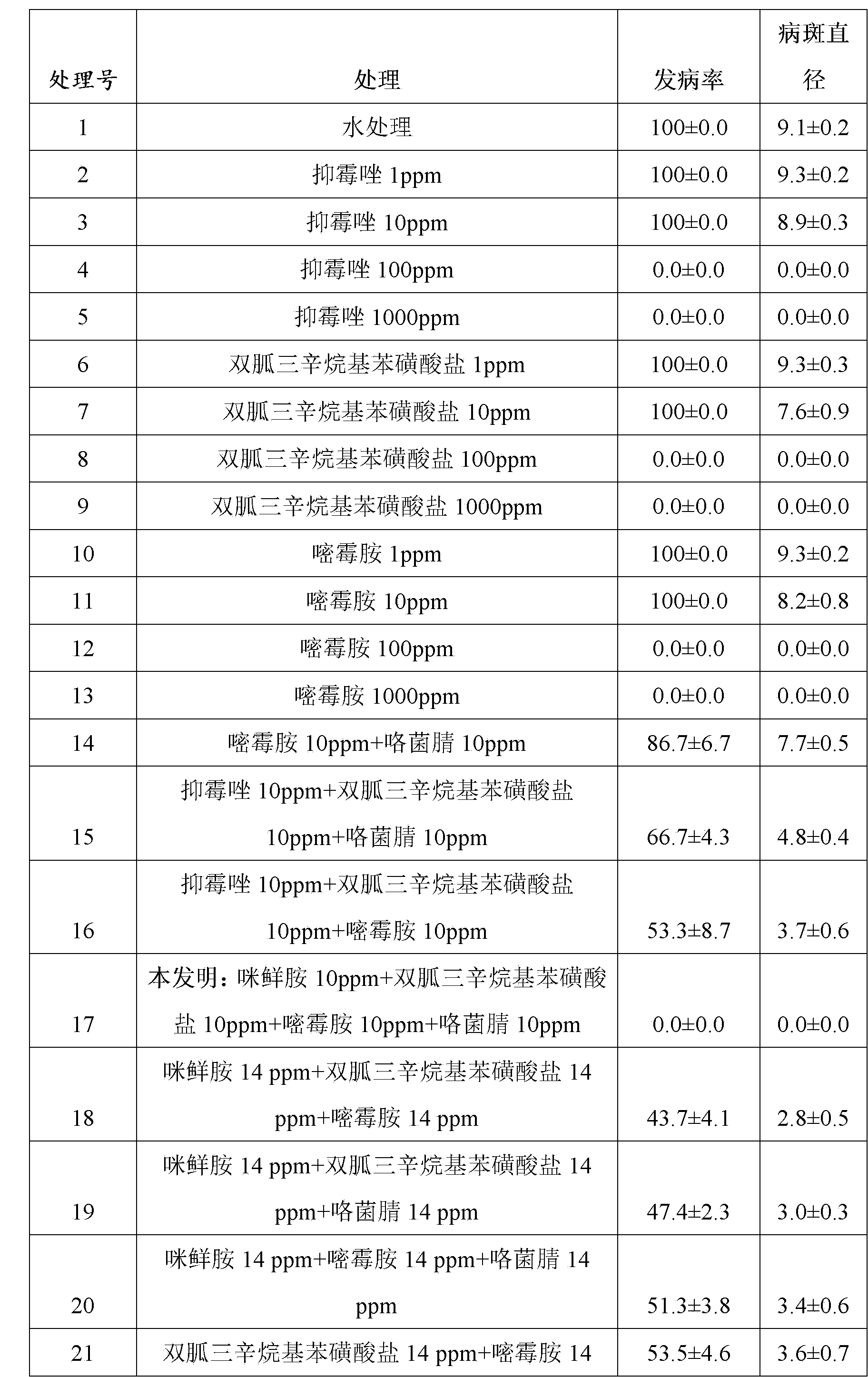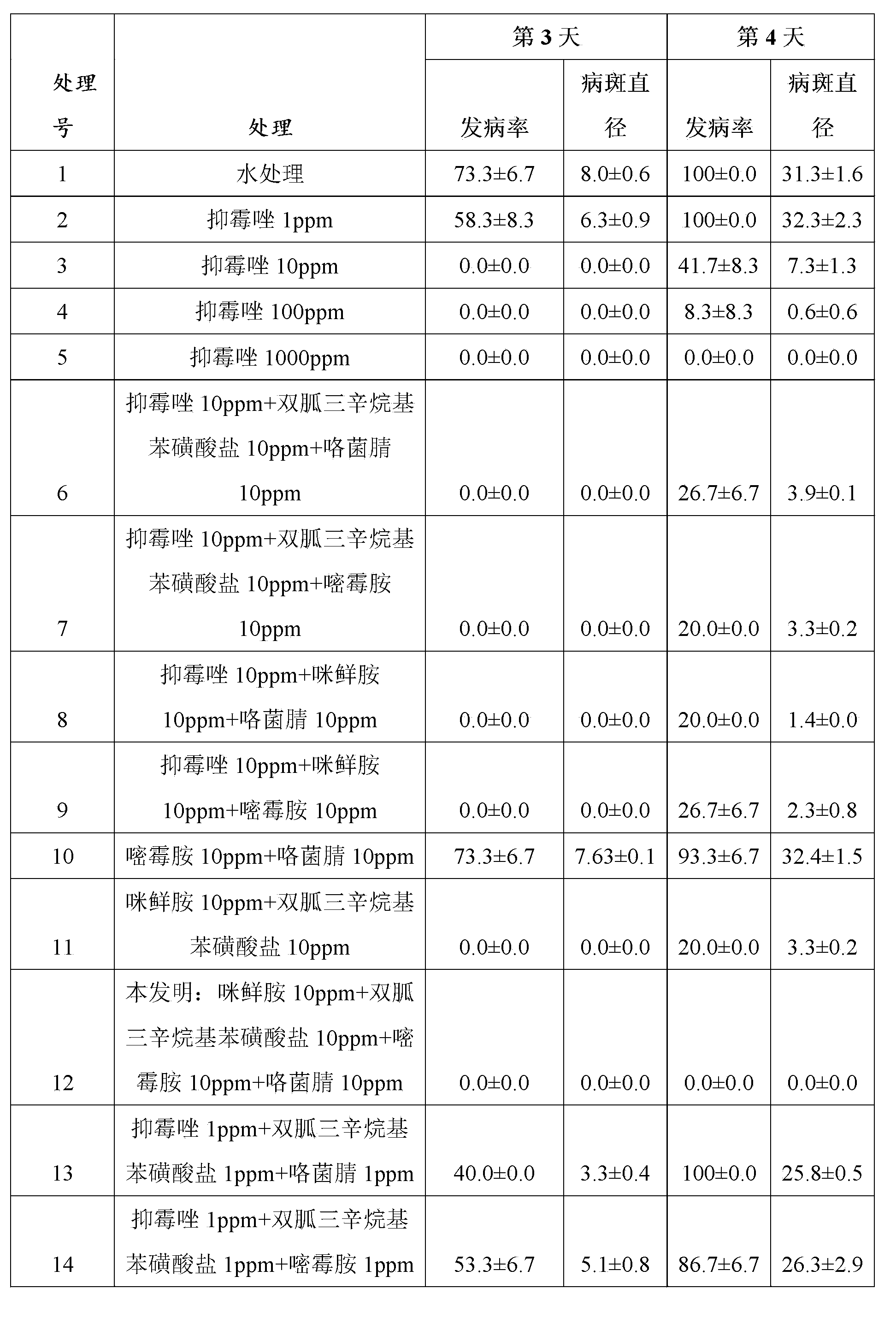Compound chemical fungicides for controlling postharvest diseases of fruits
A postharvest disease and fungicide technology, applied in the fields of application, food science, and fruit and vegetable preservation, can solve the problems of reduced efficacy of fungicides, high cost, and drug resistance of pathogenic microorganisms, and achieve postharvest disease control, easy operation, and low cost effect
- Summary
- Abstract
- Description
- Claims
- Application Information
AI Technical Summary
Problems solved by technology
Method used
Image
Examples
Embodiment Construction
[0020] Experiment 1 Effect of low-dose fungicide combination (compound chemical fungicide) on the control of blue mold in pear fruit
[0021] 1. Experimental materials:
[0022] The fruit is pear, and the variety is crystal pear. Pathogens: Penicillium expanses.
[0023] The fungicides used were:
[0024] Prochloraz, a prochloraz fungicide, is in the form of a suspension, purchased from Maxim Chemical Company of Israel, and the recommended concentration for normal use is 250-500 mg / kg.
[0025] Bacoud, biguanide trioctylbenzene sulfonate (Iminoctadine tris) fungicide, the dosage form is 40% wettable powder, purchased from Dainippon Ink Chemical Industry Co., Ltd., the recommended concentration for normal use is 200-400mg / kg.
[0026] Scale, Pyrimethanil fungicide, the dosage form is suspension concentrate, purchased from Bayer Crop Science Company, the recommended concentration for normal use is 1000-1500 times liquid.
[0027] Shilashi, Fludioxonil fungicide, the dosage f...
PUM
 Login to View More
Login to View More Abstract
Description
Claims
Application Information
 Login to View More
Login to View More - R&D
- Intellectual Property
- Life Sciences
- Materials
- Tech Scout
- Unparalleled Data Quality
- Higher Quality Content
- 60% Fewer Hallucinations
Browse by: Latest US Patents, China's latest patents, Technical Efficacy Thesaurus, Application Domain, Technology Topic, Popular Technical Reports.
© 2025 PatSnap. All rights reserved.Legal|Privacy policy|Modern Slavery Act Transparency Statement|Sitemap|About US| Contact US: help@patsnap.com



